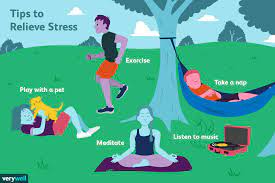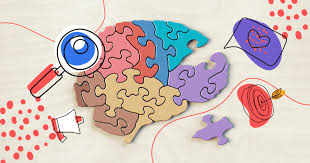Tension Relief: Finding Peace in a Fast-Paced World
In today’s fast-paced world, it’s no surprise that many of us experience high levels of tension and stress. From demanding work schedules to personal responsibilities and societal pressures, the daily grind can take a toll on our well-being. However, it’s essential to prioritize tension relief and find moments of peace amidst the chaos.
- Identify the Source: Understanding what triggers your tension is the first step towards relief. Is it work-related deadlines, relationship issues, or financial worries? Once you pinpoint the source, you can develop strategies to address it directly.
- Practice Mindfulness: Mindfulness is a powerful tool for tension relief. Take a few minutes each day to focus on your breath, observe your thoughts without judgment, and ground yourself in the present moment. This practice can help reduce anxiety and promote relaxation.
- Engage in Physical Activity: Exercise is not only beneficial for physical health but also plays a significant role in tension relief. Whether it’s going for a run, practicing yoga, or taking a dance class, physical activity releases endorphins that elevate mood and reduce stress.
- Prioritize Self-Care: Make self-care a non-negotiable part of your routine. Engage in activities that bring you joy and relaxation, such as reading a book, taking long baths, or enjoying nature walks. Remember that self-care is not selfish; it’s necessary for overall well-being.
- Connect with Others: Social support is crucial when it comes to tension relief. Share your feelings with trusted friends or family members who can provide comfort and perspective. Engaging in meaningful conversations and fostering connections can help alleviate stress.
- Practice Deep Breathing: Deep breathing exercises are simple yet effective techniques for immediate tension relief. Take slow breaths in through your nose, allowing your belly to expand fully, then exhale slowly through your mouth. This practice activates the body’s relaxation response, reducing tension and promoting calmness.
- Create Boundaries: Establishing boundaries is essential for managing tension. Learn to say no when necessary and set realistic expectations for yourself. Prioritize your well-being by creating a healthy work-life balance and avoiding overcommitment.
- Seek Professional Help: If tension and stress become overwhelming or persistent, do not hesitate to seek professional help. A therapist or counselor can provide guidance and support in developing personalized strategies for tension relief.
Remember, tension relief is an ongoing process that requires consistent effort and self-awareness. Embrace the journey towards finding peace in your life, one step at a time. By incorporating these practices into your daily routine, you can cultivate a sense of calmness and resilience even in the midst of life’s challenges.
8 Tips for Relieving Tension: A Comprehensive Guide
- Take deep breaths
- Exercise
- Get enough sleep
- Eat healthy foods
- Talk it out
- Practice mindfulness meditation
- Take breaks from technology
- Find an outlet for creativity
Take deep breaths
Take Deep Breaths: A Simple Yet Powerful Tension Relief Technique
In moments of stress and tension, sometimes the simplest techniques can make a world of difference. One such technique that is readily accessible to us all is taking deep breaths. It may sound too simple to be effective, but don’t underestimate the power of this age-old practice.
When we find ourselves in stressful situations, our bodies naturally respond with shallow and rapid breathing. This type of breathing activates our body’s stress response, leading to increased heart rate, elevated blood pressure, and heightened anxiety. However, by consciously taking deep breaths, we can counteract these physiological responses and bring about a sense of calmness and relaxation.
To practice deep breathing, find a quiet and comfortable space where you can focus on your breath without distractions. Take a slow breath in through your nose, allowing your belly to expand fully as you fill your lungs with air. Then exhale slowly through your mouth, releasing any tension or negative energy with each breath out.
Deep breathing works by activating the body’s relaxation response. It sends signals to the brain that it’s safe to relax and let go of stress. As you continue this practice, you may notice a decrease in muscle tension, a slowing down of racing thoughts, and an overall sense of tranquility.
Incorporating deep breathing into your daily routine can have numerous benefits beyond tension relief. It can help improve focus and concentration, enhance sleep quality, boost immune function, and reduce symptoms of anxiety and depression.
The beauty of deep breathing is that it can be done anytime and anywhere. Whether you’re stuck in traffic, feeling overwhelmed at work, or simply needing a moment of calm amidst a busy day – taking deep breaths is always accessible.
So the next time you feel tension building up within you or find yourself caught up in stress-inducing situations, remember to pause and take deep breaths. Allow this simple yet powerful technique to guide you back to a state of peace and balance. Embrace the transformative power of your breath and experience the profound impact it can have on your well-being.
Exercise
Exercise: A Powerful Tool for Tension Relief
When it comes to finding relief from tension and stress, few things are as effective as regular exercise. Engaging in physical activity not only benefits our physical health but also has a profound impact on our mental and emotional well-being.
Exercise acts as a natural stress reliever by releasing endorphins, the feel-good hormones, in our brains. These endorphins help elevate our mood and reduce anxiety, leaving us feeling more relaxed and at ease. Whether it’s going for a jog, hitting the gym, or taking a dance class, any form of exercise can provide significant tension relief.
Apart from the immediate mood-boosting effects, exercise also offers long-term benefits for managing tension. Regular physical activity helps regulate cortisol levels, the hormone associated with stress. By keeping cortisol levels in check, exercise helps prevent chronic stress and its negative impact on our overall health.
Moreover, engaging in exercise provides an opportunity to shift our focus away from the sources of tension and onto something positive and energizing. It allows us to break away from our daily routine and gives us a sense of accomplishment as we work towards improving our fitness levels.
The beauty of exercise is that there are countless options to choose from. Find an activity that you enjoy and fits your lifestyle. It could be anything from brisk walking or cycling to yoga or swimming. The key is to find something that you look forward to doing regularly.
Remember that even small amounts of exercise can make a difference. If you’re new to exercising or have limited time available, start with short sessions and gradually increase the duration and intensity as you build stamina.
Incorporating exercise into your routine doesn’t have to be complicated either. Look for opportunities throughout the day to be more active – take the stairs instead of the elevator, go for a walk during your lunch break, or do some stretching exercises while watching TV.
Prioritizing regular exercise as part of your tension relief strategy can have a transformative impact on your overall well-being. Not only does it provide immediate relief from stress, but it also contributes to better physical health and emotional resilience in the long run. So, lace up those sneakers and get moving – your body and mind will thank you!
Get enough sleep
Get Enough Sleep: The Key to Tension Relief
When it comes to tension relief, one of the most underestimated yet crucial factors is getting enough sleep. In our busy lives, sleep often takes a backseat as we prioritize work, social obligations, and other responsibilities. However, neglecting our sleep can have detrimental effects on our physical and mental well-being.
Sleep plays a vital role in tension relief by allowing our bodies and minds to rest, recover, and recharge. During sleep, our bodies repair damaged cells, restore energy levels, and strengthen the immune system. Mentally, sleep helps consolidate memories, enhance cognitive function, and improve overall mood.
When we don’t get enough sleep, tension can build up quickly. We may find ourselves more irritable, easily overwhelmed by stressors, and less equipped to handle daily challenges. Lack of sleep can lead to increased anxiety levels and reduced ability to concentrate or make decisions effectively.
To prioritize tension relief through adequate sleep:
- Set a Consistent Sleep Schedule: Establish a regular bedtime routine that allows you to unwind before bed. Try to go to bed and wake up at the same time each day to regulate your body’s internal clock.
- Create a Sleep-Friendly Environment: Make your bedroom a sanctuary for restful sleep. Keep it dark, quiet, and cool. Remove electronic devices that emit blue light as it can disrupt your natural sleep patterns.
- Limit Stimulants: Avoid consuming caffeine or nicotine close to bedtime as they are stimulants that can interfere with falling asleep or disrupt the quality of your sleep.
- Establish Relaxation Techniques: Prioritize winding down before bed by engaging in relaxation techniques such as reading a book, taking a warm bath, or practicing mindfulness exercises like deep breathing.
- Avoid Electronic Devices Before Bed: The blue light emitted by electronic devices can interfere with the production of melatonin—a hormone that regulates sleep-wake cycles. Try to limit screen time at least an hour before bed.
- Evaluate Your Sleep Environment: Invest in a comfortable mattress, pillows, and bedding that support quality sleep. Consider using blackout curtains, earplugs, or white noise machines to create an optimal sleep environment.
Remember, getting enough sleep is not a luxury but a necessity for tension relief and overall well-being. Prioritize your sleep just as you would any other important aspect of your life. By giving yourself the gift of restful nights, you’ll wake up feeling refreshed, rejuvenated, and better equipped to face the day’s challenges with a clear and calm mind.
Eat healthy foods
Eat Healthy Foods: Nourishing Your Body and Mind for Tension Relief
When it comes to tension relief, we often focus on practices like meditation, exercise, and self-care. While these are undoubtedly important, we must not overlook the role that our diet plays in managing stress and promoting overall well-being. Eating healthy foods can be a powerful tool in our quest for tension relief.
A balanced diet consisting of wholesome, nutrient-rich foods can provide our bodies with the necessary fuel to function optimally. Here’s how incorporating healthy foods into your diet can contribute to tension relief:
- Boosting Mood: Certain foods have been linked to improved mood and mental well-being. For example, complex carbohydrates found in whole grains, fruits, and vegetables help regulate blood sugar levels and promote the production of serotonin, a neurotransmitter that plays a crucial role in mood regulation.
- Reducing Inflammation: Chronic inflammation in the body has been associated with increased stress levels. By consuming foods rich in antioxidants, such as berries, leafy greens, and fatty fish like salmon or trout, we can combat inflammation and support our body’s natural healing processes.
- Supporting Gut Health: The gut-brain connection is a fascinating area of research that highlights the impact of our digestive system on mental health. Consuming probiotic-rich foods like yogurt or fermented vegetables promotes a healthy balance of gut bacteria, which has been linked to improved mood and reduced anxiety.
- Providing Essential Nutrients: Essential nutrients like vitamins B complex (found in whole grains and leafy greens), vitamin C (abundant in citrus fruits), magnesium (found in nuts and seeds), and omega-3 fatty acids (found in fatty fish) are known for their stress-reducing properties. Including these nutrients in your diet helps support your body’s resilience to stress.
- Improving Energy Levels: A well-balanced diet ensures that your body receives the energy it needs to function optimally. By avoiding processed foods and sugary snacks that can lead to energy crashes, and instead focusing on whole, unprocessed foods like lean proteins, complex carbohydrates, and healthy fats, you can maintain stable energy levels throughout the day.
Remember, adopting a healthy eating pattern is not about strict diets or deprivation. It’s about nourishing your body with wholesome foods that provide the necessary nutrients for tension relief and overall well-being. Incorporate a variety of fruits, vegetables, whole grains, lean proteins, and healthy fats into your meals. Listen to your body’s hunger and fullness cues and make mindful choices that support your mental and physical health.
By making conscious decisions about what we eat, we can empower ourselves to manage tension more effectively. So let food be thy medicine as you embark on your journey towards a healthier lifestyle and greater tension relief.
Talk it out
Talk It Out: The Power of Communication in Tension Relief
When tension and stress build up, one of the most effective ways to find relief is by talking it out. Sharing your thoughts, concerns, and emotions with someone you trust can provide immense support and help you gain new perspectives on the situation.
Why does talking it out work?
Validation: Expressing your feelings and experiences to someone who listens attentively can make you feel validated. It reassures you that your emotions are valid and that you’re not alone in what you’re going through.
Perspective: Talking about your tension with others can offer fresh perspectives. Sometimes, we get so caught up in our own thoughts that we fail to see alternative viewpoints or solutions. A trusted friend or family member may provide insights that we hadn’t considered before.
Emotional Release: Verbalizing your feelings can be cathartic. It allows you to release pent-up emotions and provides a sense of relief. Bottling up tension only intensifies it, but sharing it with someone can lighten the emotional burden.
Social Support: Human connection is essential for well-being, especially during challenging times. Engaging in open conversations fosters a sense of social support and reminds us that we have people who care about our well-being.
Tips for effective communication:
Choose the right person: Find someone who is understanding, non-judgmental, and trustworthy. This could be a close friend, family member, or even a therapist if needed.
Be clear about what you need: Before starting the conversation, clarify whether you want advice, a listening ear, or simply an empathetic presence.
Active listening: When listening to others’ experiences or advice, practice active listening by giving them your full attention. This shows respect and appreciation for their input.
Practice empathy: When discussing tension, remember that others may have their own challenges. Show empathy towards their experiences and be open to understanding their perspective as well.
Confidentiality: Ensure that the conversation remains confidential, creating a safe space for open and honest dialogue.
Remember, talking it out is not about seeking validation or immediate solutions but rather about finding relief through connection and understanding. By engaging in open communication, you can alleviate tension, gain new insights, and foster stronger relationships with those around you.
Practice mindfulness meditation
Practice Mindfulness Meditation: A Path to Tension Relief
In our fast-paced and often chaotic lives, finding moments of peace and tranquility can be a challenge. However, one powerful technique that can help us navigate the stormy waters of tension and stress is mindfulness meditation.
Mindfulness meditation involves intentionally focusing our attention on the present moment, without judgment or attachment to our thoughts and emotions. By cultivating this non-judgmental awareness, we can observe our tension and stress with a sense of curiosity and compassion, allowing us to respond rather than react.
One of the key benefits of mindfulness meditation is its ability to bring us into the present moment. Often, our tension arises from worries about the future or regrets about the past. Through regular practice, we learn to anchor ourselves in the here and now, letting go of unnecessary mental burdens.
During mindfulness meditation, we typically start by finding a quiet space where we can sit comfortably. We then bring our attention to our breath—the sensation of inhaling and exhaling—using it as an anchor for our wandering mind. As thoughts arise (and they will), we gently acknowledge them without judgment and return our focus to the breath.
Over time, this practice helps us develop greater self-awareness. We become more attuned to the physical sensations associated with tension—the tightness in our shoulders or the knot in our stomach—and can address them directly. By acknowledging these sensations with kindness rather than resistance, we create space for relaxation and release.
Moreover, mindfulness meditation enhances our emotional well-being by fostering a sense of acceptance and compassion towards ourselves and others. As we become more mindful, we develop greater clarity about our thoughts and emotions. This clarity allows us to respond skillfully to challenging situations instead of being overwhelmed by them.
Incorporating mindfulness meditation into your daily routine doesn’t have to be time-consuming or complicated. Even just a few minutes each day can make a significant difference. You can start with guided meditation apps or online resources that offer structured sessions tailored to beginners.
By practicing mindfulness meditation regularly, we can cultivate a greater sense of calmness, resilience, and overall well-being. It becomes a tool that we carry with us throughout the day, helping us navigate the ups and downs of life with grace and equanimity.
So, take a deep breath, find a comfortable seat, and embark on your mindfulness meditation journey. Discover the transformative power it holds in relieving tension and bringing you closer to a more peaceful state of mind.
Take breaks from technology
Take Breaks from Technology: Unplug and Reconnect with Yourself
In our digital age, technology has become an integral part of our lives. While it offers numerous benefits and conveniences, it can also contribute to tension and stress. Constant exposure to screens, notifications, and the pressure to always be connected can take a toll on our mental well-being. That’s why taking breaks from technology is essential for tension relief and finding balance in our lives.
When we immerse ourselves in the digital world for extended periods, we often neglect the present moment and disconnect from ourselves. Our minds become cluttered with information overload, comparisons on social media, and the constant need to stay updated. This constant stimulation can lead to increased stress levels and a sense of being overwhelmed.
By intentionally unplugging from technology for designated periods, we create space for self-reflection, relaxation, and rejuvenation. Here are some reasons why taking breaks from technology can be beneficial for tension relief:
- Mental Rest: Constant exposure to screens bombards our minds with information and stimuli, leaving little room for mental rest. Taking breaks allows us to detach from the virtual world and give our brains a much-needed break. It helps us recharge mentally and regain clarity.
- Improved Focus: Technology often leads to multitasking, which can hinder productivity and increase stress levels. By taking breaks from technology, we can focus on one task at a time without distractions. This promotes better concentration, efficiency, and ultimately reduces tension.
- Enhanced Relationships: Excessive screen time can interfere with meaningful connections with others. By disconnecting from technology, we create opportunities to engage in face-to-face interactions or quality time with loved ones. Building deeper connections strengthens our support system and provides emotional relief.
- Increased Mindfulness: Technology tends to pull us away from the present moment as we constantly check emails or scroll through social media feeds mindlessly. Taking breaks allows us to practice mindfulness, being fully present in the here and now. This cultivates a sense of calmness and helps us appreciate the beauty of our surroundings.
- Self-Care: Taking breaks from technology is an act of self-care. It allows us to prioritize our well-being by engaging in activities that promote relaxation and personal growth. Whether it’s reading a book, practicing meditation, or pursuing hobbies, these tech-free moments nurture our mental and emotional health.
Remember, taking breaks from technology doesn’t mean completely eliminating it from our lives. It’s about finding a healthy balance and making conscious choices about when and how we engage with technology. By incorporating regular tech breaks into our routines, we can reduce tension, reconnect with ourselves, and create a more harmonious relationship with the digital world.
Find an outlet for creativity
Find an Outlet for Creativity: Unlocking Tension Relief through Artistic Expression
In the quest for tension relief, we often overlook one powerful tool that lies within us all: creativity. Engaging in creative activities not only allows us to express ourselves but also serves as a therapeutic outlet for releasing tension and finding inner peace.
Creativity comes in many forms, and there is no right or wrong way to explore it. Whether it’s painting, writing, playing an instrument, dancing, or even cooking, finding an outlet for your creativity can be a transformative experience. Here’s why:
- Emotional Release: Creativity provides a safe space to channel and release emotions that may be causing tension. Through art, we can express feelings that are difficult to put into words. Painting vibrant colors on a canvas or writing heartfelt poetry can help us process emotions and find catharsis.
- Mindful Focus: Engaging in creative activities requires focus and concentration. When we immerse ourselves in the creative process, our minds become fully present, temporarily detaching from stressors and worries. This mindful focus helps quiet the mind and allows us to experience a sense of flow—a state of being completely absorbed in the activity at hand.
- Self-Exploration: Creativity invites self-exploration and introspection. Through artistic expression, we can tap into our subconscious mind and gain insights into our thoughts, beliefs, and desires. This self-reflection can lead to personal growth and increased self-awareness—a crucial component of tension relief.
- Joyful Escape: Engaging in creative pursuits brings joy and pleasure into our lives. It offers a break from the demands of everyday life and allows us to indulge in activities purely for the sake of enjoyment. This joyful escape replenishes our energy reserves and helps restore balance amidst life’s challenges.
Remember that creativity is not about producing masterpieces; it’s about embracing the process itself. Release any self-judgment or expectations of perfection. Allow yourself to play, experiment, and explore without limitations. The goal is not to create something flawless but to tap into your inner creativity and experience the joy it brings.
So, find an outlet for your creativity today. Set aside time to engage in activities that ignite your passion and inspire your imagination. Whether it’s picking up a paintbrush, writing in a journal, or dancing like nobody’s watching, let your creativity flow freely. You’ll discover that through artistic expression, you can unlock the power of tension relief and find a renewed sense of peace within yourself.




